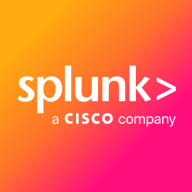

Splunk Enterprise Security and Snare compete in real-time security monitoring and data analytics. Splunk holds a strong position due to its wide feature set, whereas Snare benefits from cost-effectiveness and efficient deployment.
Features: Splunk Enterprise Security includes advanced threat detection, incident management, and real-time visibility, suitable for large-scale businesses. Snare offers efficient log collection, lightweight deployment, and flexibility, focusing on logging solutions. The distinction lies in Splunk's broader analytics versus Snare's specialized logging.
Ease of Deployment and Customer Service: Splunk’s deployment process is more complex due to its features but offers strong support. Snare is simpler and faster to install with efficient customer service, attracting organizations looking for quick implementation.
Pricing and ROI: Splunk generally has higher initial setup costs due to its comprehensive tools, justifying investment for larger enterprises. Snare provides a budget-friendly pricing model, focusing on log management efficiency, helping organizations seeking cost-effective solutions with noticeable ROI.
| Product | Market Share (%) |
|---|---|
| Splunk Enterprise Security | 9.2% |
| Snare | 0.5% |
| Other | 90.3% |


| Company Size | Count |
|---|---|
| Small Business | 110 |
| Midsize Enterprise | 50 |
| Large Enterprise | 257 |
Snare customers consistently tell us that as the financial and reputational consequences of data breaches, cyber threats like malware and ransomware and the constant risks from insider threats increase that they have urgent and ongoing requirements for maintaining regulatory compliance, auditing and managing cyber threat detection and response. They also tell us that existing solutions like SIEM are often complex to implement and maintain, require specialised technical resources or are increasingly unaffordable or variable in their pricing. As a result of these increased requirements Prophecy International has created the Snare product suite.
Compliance requirements can include any number of regulatory mandates including PCI-DSS, Sarbanes Oxley, HIPAA, NERC, GDPR and more. This makes Snare a high value solution for companies in the Government, Defence and Military sectors, Banking, Finance and Insurance, Retail, Health, Energy, Oil & Gas markets.
Snare is a complete suite of Centralised Log Management (CLM), Security Analytics and SIEM tools.
Created by ex military personnel for military use it offers the highest level of security.
Designed to work as part of your security ecosystem Snare also integrates with most other SIEMs including SPLUNK, QRadar, ARCSight and many more. With over 3,000 customers worldwide using Snare for compliance, auditing and threat response, Snare is the name you can trust.
From Enterprise Agents for Windows, Unix, Linux, OSX, Flat files and Databases to a complete forensics and long term log storage platform, agent management console, multipoint log reflector, advanced log analytics and next gen SIEM capability. Either hosted or on prem with both Opex and Capex pricing models, Snare is a one stop shop for CLM and SIEM. Snare product suite is broadly split into two areas:
Centralised Log Management incorporates and 4 core technologies
Snare Analytics incorporates another 4 core technologies
These products can be bought independently or combined into a compete solution. You can also “mix and match” with your current security technologies ensuring that you can leverage your existing investments.
Splunk Enterprise Security delivers powerful log management, rapid searches, and intuitive dashboards, enhancing real-time analytics and security measures. Its advanced machine learning and wide system compatibility streamline threat detection and incident response across diverse IT environments.
Splunk Enterprise Security stands out in security operations with robust features like comprehensive threat intelligence and seamless data integration. Its real-time analytics and customizable queries enable proactive threat analysis and efficient incident response. Integration with multiple third-party feeds allows detailed threat correlation and streamlined data visualization. Users find the intuitive UI and broad compatibility support efficient threat detection while reducing false positives. Despite its strengths, areas such as visualization capabilities and integration processes with cloud environments need enhancement. Users face a high learning curve, and improvements in automation, AI, documentation, and training are desired to maximize its potential.
What Are the Key Features of Splunk Enterprise Security?In specific industries like finance and healthcare, Splunk Enterprise Security is instrumental for log aggregation, SIEM functionalities, and compliance monitoring. Companies leverage its capabilities for proactive threat analysis and response, ensuring comprehensive security monitoring and integration with various tools for heightened operational intelligence.
We monitor all Security Information and Event Management (SIEM) reviews to prevent fraudulent reviews and keep review quality high. We do not post reviews by company employees or direct competitors. We validate each review for authenticity via cross-reference with LinkedIn, and personal follow-up with the reviewer when necessary.